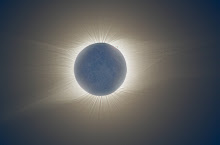
National Post: Canadian scientists are 'flagging up warnings' to the world as new research shows a marine species is rapidly dying, which could significantly change the way humans live -- from what we eat to the air we breathe.
A Dalhousie University-based study, published in the scientific journal Nature... suggested for the first time that microscopic marine algae known as 'phytoplankton' have been declining globally -- its population has decreased by roughly 40% since 1950 -- because of rising sea surface temperatures and changing ocean conditions.
'This may well be one of the largest biological changes observed in recent times, simply because it affects most of the biosphere,' said study co-author Boris Worm... 'Phytoplankton are a critical part of our planetary life-support system. They produce half of the oxygen we breathe... and ultimately all of our fisheries.' ... He said the species is just as valuable to survival as 'all plants on land combined.'...
'The climate is changing and all of these impacts are occurring simultaneously and that's tough for any ecosystem to withstand. It'll be bad news if we continue on our present course,' he said.
Plants at base of ocean food chain in declineThe Globe and Mail: Phytoplankton act as the grass of the ocean and form the base of the aquatic food chain. The organisms live at the surface of the water, and are the main source of food for zooplankton, which in turn form the diet of fish and other sea creatures that are eaten by bigger fish, large whales and humans that occupy the top of the food chain... The study found phytoplankton populations fell in eight out of 10 regions globally. These declines were occurring more rapidly in polar and tropical regions.
The Toronto Star: Despite their tiny size, plant plankton found in the world's oceans are crucial to much life on Earth. They are the foundation of the bountiful marine food web, produce half the world's oxygen and suck up harmful carbon dioxide. They are also declining sharply... The probable cause is global warming...
When plant plankton plummet, as they do during El Niño climate cycles, sea birds and marine mammals starve and die in huge numbers... 'Phytoplankton ultimately affects all of us in our daily lives,' said lead author Daniel Boyce, also of Dalhousie University in Halifax, Nova Scotia. 'Much of the oxygen in our atmosphere today was produced by phytoplankton or phytoplankton precursors over the past 2 billion years.' Plant plankton -- some of it visible, some microscopic -- help keep Earth cool. They take carbon dioxide, the key greenhouse gas, out of the air to keep the world from getting even warmer...
Worm said when the surface of the ocean gets warmer, the warm water at the top does not mix as easily with the cooler water below. That makes it more difficult for the plant plankton, which are light and often live near the ocean surface, to get nutrients [from] deeper, cooler water. It also matches other global warming trends, with the biggest effects at the poles and around the equator.




































